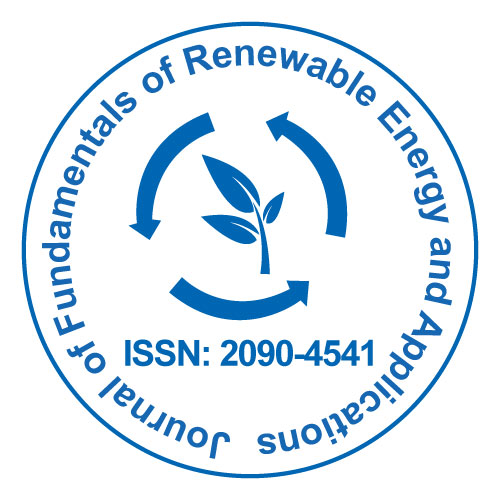
Journal of Fundamentals of Renewable Energy and Applications
Open Access
ISSN: 2090-4541
+44 1300 500008

ISSN: 2090-4541
+44 1300 500008
Kelly Dwyer
University of Limerick, Ireland
Monaghan Biosciences Ltd., Ireland
Scientific Tracks Abstracts: J Fundam Renewable Energy Appl
The DNA sequences of two beta-1,4-xylanase enzymes (xyn1 and xyn12) from a filamentous fungus known to produce lignocellulosic enzymes with temperature optima approaching or exceeding 65├?┬░C, have been isolated. Both sequences encode GH10 catalytic regions, with Xyn12 containing a linker and CBM1 region at the protein├ó┬?┬?s C-terminus. The enzymes have been recombinantly expressed in P. pastoris X-33, purified via IMAC purification and characterized. The xylanases display optimum pH values of 4.5 and optimum temperature values of 70├?┬░C and 75├?┬░C, indicating potential advantage over current commercial enzymes in industries such as production of biofuels, paper and pulp industry, baking industry, and the animal feed industry. However, when incubated under lignocellulosic hydrolysis conditions, both enzymes loose over 50% of their relative activity after 1 hour of incubation. With the aim of increasing the enzymes├ó┬?┬? thermo-stability, and to further understand the role of the individual enzymes in a cellulosic enzyme cocktail, the enzymes have undergone protein engineering. The CBM1 and linker region of Xyn12 has been removed to yield a protein of 344 amino acids consisting of a GH10 catalytic domain. The linker and CBM1 region has been added to the C-terminus of the Xyn1 sequence, yielding a 408 amino acid sequence containing a GH10 region, a linker region and a CBM1 region. The addition or removal of CBM domains in lignocellulosic enzymes have been previously seen to affect their stability and activity. The engineered xylanases are undergoing recombinant expression, purification, characterization, and are being compared to their wildtype counterparts.
Kelly Dwyer is an Irish Research Council Employment-Based Post-graduate working between the University of Limerick (UL) and Monaghan Biosciences Ltd. She is currently researching novel enzymes from fungal sources which have potential advantages (thermo-activity, thermo-stability, etc.) over current commercial enzymes used in various industries (biofuel, mushroom-growing industry, paper and pulp industry, baking industry, animal feed industry, etc.). She completed her BSc in Industrial Biochemistry at UL in 2014. She has held the following roles: QC Technician at Vistakon Ireland, Process Engineers Group member at Bristol Myer-Squibb, Tutor at Science Learning Centre, Laboratory Demonstrator, and Graduate Teaching Assistant at UL.
Email: dwyerkel@gmail.com